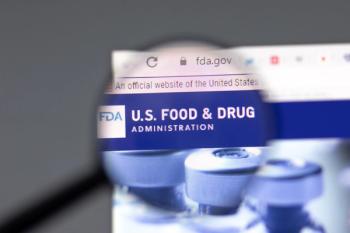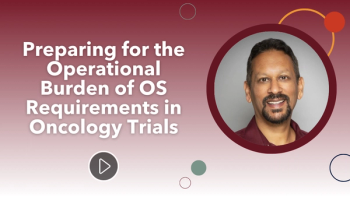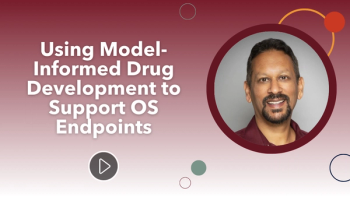
- Applied Clinical Trials-04-01-2005
Reporting Adverse Reactions to Clinical Trial Investigators in the ICH Regions: Key Differences
It can be difficult to determine when a hospitalization is "for treatment" and counts as serious under Japanese regulations.
Clinical trials are increasingly global. They commonly span the United States and the European Union, and—due to increasing trial activity in Japan—sometimes include all three ICH regions under a single protocol. Companies have both an operational and an ethical need to harmonize the provision of Suspected Unexpected Serious Adverse Reactions (SUSARs) to all investigators participating in a trial. International pharmaceutical developers also desire to implement consistent processes among all affiliates for alerting investigators of SUSARs in company-sponsored good clinical practice (GCP) studies.
However, there are still substantial international differences in regulations on SUSARs. The rules on reporting to regulatory agencies are not fully harmonized, and different regions have different expectations on the timing and amount of information provided to investigators and regulators. This paper will cite the major regulations and guidance related to expedited reporting of SUSARs in the EU, the United States, and Japan, and point out fundamental differences in requirements between the three ICH regions.
Methods and resources
The regulations and guidance describing investigator notification under the European Commission, the U.S. Code of Federal Regulations, and the Japanese Pharmaceutical Affairs Law were reviewed and compared to the relevant ICH documents (Table 1).
Table 1. Resources on the Internet
ICH
ICH guidance related to SUSAR reporting to investigators are found in the E6 Guidance on GCP and the E2A Guidance on Clinical Safety Management. E6 sections 5.16 and 5.17 read as follows
1
5.16.2: The sponsor should promptly notify all concerned investigator(s)/institution(s) and the regulatory authority(ies) of findings that could affect adversely the safety of subjects, impact the conduct of the trial, or alter the IRB/IEC's approval/favorable opinion to continue the trial.
5.17.1: The sponsor should expedite the reporting to all concerned investigator(s)/institutions(s), to the IRB(s)/IEC(s), where required, and to the regulatory authority(ies) of all adverse drug reactions (ADRs) that are both serious and unexpected.
The E2A guidance2 is more specific regarding the definitions of "serious" and "unexpected," and indicates reports that are both serious and unexpected should be expedited to regulators. However, E2A does not suggest the timelines for reporting information to investigators—the well-known seven- and 15-day timelines described in section III.B of that document apply only to reporting to regulatory agencies. Also, E2A does not clarify the format of such reports, or specify if the requirement applies just to SUSARs arising from clinical trials or if it includes spontaneous reports. As described below, these omissions reflect a lack of harmonization in international regulations.
European Union
Directive 2001/20/EC
3
instructs on regulations for the implementation of GCP in the EU with definitions given in Article 2 and sponsor obligations for reporting SUSARs given in Article 17. The actual implementation of the directive in member states varies. These national variations are beyond the scope of this review, but further complicate unified reporting to investigators. Guidance on clinical trial SUSAR reporting was issued in April 2004 as "Detailed guidance on the collection, verification, and presentation of adverse reaction reports arising from clinical trials on medicinal products for human use."
4
Section 6.4 provides the general guidance that the sponsor must inform all investigators on "findings that could adversely affect the safety of study subjects" but the only timeline given for investigator reporting is "as soon as possible."
United States
CFR 312.32 covers IND safety reports.
5
The FDA regulation is the only one of those reviewed here that gives a specific timeline for reporting to investigators: 15 days for any reactions that are both serious and unexpected. It is important to note that a Proposed Rule was published in the Federal Register on 14 March 2003 that would modify these reporting requirements; however, the proposal has not been finalized, so it will not be discussed further here. Although there are several guidance documents for reporting postmarketing events in the United States, there is no guidance specific to reporting reactions from clinical trials or to investigators participating in those trials.
Japan
Reporting of adverse reactions occurring during clinical trials is covered in sections 80-2-6 and 66-7 of the Pharmaceutical Affairs Law. This portion of the law as written describes reporting to the Minister of Health, Labour and Welfare. In practice, though, reports are submitted to the Pharmaceuticals and Medical Devices Agency (PMDA). Section 20-2 of the Japanese regulation on GCP requires sponsors to report "immediately" to investigators and the heads of institutions involved in the clinical trial. Guidance on reporting is issued in Notifications, which are frequently modified and superseded by subsequent Notifications. The most recent Notifications relevant to this discussion were issued on 30 March 2004
6,7
but their content is the same as earlier Notifications regarding the issues below.
Differences—Nonserious hospitalizations
In the definition of "serious," all hospitalizations are considered "serious" in the ICH E2A document and in U.S. and EU regulations. However, in Japan only hospitalizations or extension of hospitalization "for treatment" qualify as serious. When the E2A ICH document was translated into Japanese, the words "for treatment" were added to the portion of the definition of "serious" covering hospitalizations. Section 66-7 of the Pharmaceutical Affairs Law also specifies that hospitalizations are only considered serious if they are for treatment. In practice, it can be difficult to determine when a hospitalization is "for treatment" and counts as serious under Japanese regulations. Further, having a different standard for what qualifies as a "serious" adverse event in Japan as compared with other ICH territories can complicate compliance with internal standard operating procedures for multinational companies and safety data exchange agreements for licensing partners outside Japan.
An additional difference in the definition of "serious" is that where the ICH, EU, and U.S. documents use the phrase "persistent or significant disability/incapacity," the Japanese PAL uses an unqualified term equivalent to "disability." However, in later notifications,7 sponsors are instructed to map this definition of disability to the ICH definition when creating an electronic (E2B) report. Therefore, in practice these different expressions are treated as equivalent.
When a new event becomes "expected"
In both the United States and Europe, an event is considered unexpected if its degree or nature are inconsistent with what is written in the Investigators Brochure, and all subsequent reports of a previously reported event continue to be unexpected until the Investigators Brochure has been amended to include it. In contrast, once an event has been distributed to investigators as a SUSAR in Japan it is considered "expected."
6
Whether the Japanese practice will mean that subsequent reports of that event are subject to expedited reporting depends on whether the event is one of "death" or "life-threatening," or only meets the other criteria for seriousness.
Expected life-threatening and death SUSARs
The United States, EU, and Japan all require seven-day reporting to regulators of unexpected life-threatening and death SUSARs, although none of these territories specifies a seven-day timeline for reporting to investigators. In all three regions, unexpected serious reactions, which are serious by any of the other criteria, are to be reported to regulators within a 15-day timeline. In Japan, unlike the United States and EU, expected life-threatening and death SUSARs qualify as 15-day reports to the PMDA and must also be reported to investigators.
Reporting of spontaneous reactions
When a drug being studied in clinical trials is already marketed either in the country where the trial is being performed or overseas, spontaneous reports of adverse reactions will be available for possible reporting to investigators. In the United States, spontaneous reports do not need to be reported to investigators if the study drug already has U.S. marketing approval for any indication. Similarly in the EU, if a drug has marketing approval in any EU member state, then spontaneous SUSARs do not need to be submitted to investigators.
In contrast, in Japan spontaneous reports from within Japan and from outside must be distributed to investigators if they meet the other criteria for expedited reporting. The result is that there is usually a much higher reporting burden to Japanese investigators in clinical trials than to their U.S. or EU counterparts, especially if the study drug is already marketed.
Reports from non-health care professionals
Spontaneous adverse reactions may reach companies from a number of sources besides health care professionals, including patients, their families, and lawyers. Indeed, there is still no definition of a "healthcare professional" that is accepted in all ICH regions. To simplify the discussion, the term "consumer reports" will be used to indicate any adverse reaction that is initiated by someone other than a health care professional.
Because a sponsor may receive spontaneous reports while clinical trials are ongoing, there is a need to consider whether or not consumer-reported SUSARs should be provided to trial investigators. United States regulations do not distinguish between health care professional and other reports. In fact, most consumer reports internationally are received in the United States. However, because consumer reports can only be received after a product is marketed, and FDA regulations specify that once a product is marketed in the United States spontaneous SUSARs do not need to be distributed to clinical trial investigators, there is never a need to triage U.S. consumer reports for reporting to U.S. investigators.
In the EU, only adverse reactions that have been reported or verified by a health care professional are currently considered reportable. So again, consumer reports would not be sent to investigators.
The situation is more complicated in Japan. The Pharmaceutical Affairs Law does not distinguish between health care professionals and other reporters, although very few consumer reports are received in Japan. Because development of a given compound in Japan frequently lags its development in the United States and Europe, there are often a large number of foreign consumer reports that must be considered for reporting to investigators in Japan. For consumer reports, unlike those from health care professionals, it is acceptable in Japan for the company to decide unilaterally whether or not the report is a reaction. Nonetheless, any consumer reports that the sponsor determines are SUSARs will be reportable to investigators in Japan.
Timelines
Only U.S. regulations give a clear, 15-day timeline for reporting SUSARs to clinical trial investigators. The EU Clinical Trials Directive states that "The Sponsor shall also inform all investigators" but gives no timeline on reporting to investigators. The EU guidance4 only states that notification to investigators should be "prompt." Similarly, the phrase used in Japanese regulations indicates that reporting should not be delayed but gives no indication of whether a week, 15 days, or a month is appropriate.
Format of report
Both the U.S. and Japanese regulations indicate that individual reports of SUSARs are to be provided to investigators in the same format they are provided to the agencies. Section 6.4 of the EU Guidance4 suggests that line-listings accompanied by a concise summary may be an appropriate format for informing investigators.
Reporting to ECs and IRBs
EU regulations give the same timelines for reporting to regulators as to ethics committees (ECs) and clearly state the sponsor is responsible for reporting to ECs. Although the EU regulations do not give timelines for reporting to investigators, they specify the same seven- and 15-day timelines for reporting to ECs as apply to reporting to regulators. Japanese regulations also place responsibility for reporting to the institutional review board (IRB) on the sponsor. In contrast, U.S. regulations give investigators the responsibility for reporting to the IRB. Although this does not change the sponsor's responsibility for distributing reports to investigators, similar logistic and timing issues are faced in reporting to the EC/IRB and study investigators.
Conclusion
Although great strides have been made in harmonizing reporting requirements for adverse reactions, substantial differences continue between the three ICH regions in what reports must be expedited to clinical trial investigators and when (Table 2). The effect of many of these differences is to increase the reporting burden for investigators who are based in Japan, even if they are working with the same protocol and Investigator's Brochure as investigators in the United States or Europe participating in the same clinical trial.
Table 2. Differences in reportability to investigators
References
1. ICH Harmonised Tripartite Guideline, Guideline for Good Clinical Practice.
2. ICH Harmonised Tripartite Guideline, Clinical Safety Data Management: Definitions and Standards for Expedited Reporting.
3. European Commission Directive 2001/20/EC.
4. European Commission, "Detailed guidance on the collection, verification and presentation of adverse reaction reports arising from clinical trials on medicinal products for human use" April, 2004.
5. Code of Federal Regulations, Title 21, Part 312 Section 32 (U.S. Government Printing Office, Washington, D.C.).
6. Notification #0330020 of the Evaluation and Licensing Division and Notification #0330003 of the Safety Division, Japanese Ministry of Health, Labour and Welfare, March 30, 2004. (Japanese)
7. Notification #0330014 of the Evaluation and Licensing Division, Japanese Ministry of Health, Labour and Welfare, March 30, 2004. (Japanese)
Stewart Geary, MD, is with Eisai Co., Ltd., Koishikawa 4-6-10, Bunkyo-ku, Tokyo, 112-8088 Japan, +81 (0)3 3817-5288, fax +81 (0)3 3811 2980, email:
Articles in this issue
over 20 years ago
Measures of Successover 20 years ago
The Future of Ethics: A European Perspectiveover 20 years ago
FDA Approval Process Under Scrutinyover 20 years ago
eShowcaseover 20 years ago
Letters to the Editorover 20 years ago
Subject Diversity Is Good for the Business of Medicineover 20 years ago
Investigational Medicinal Products— Optimizing the Supply Chainover 20 years ago
Designing New Trials with TechnologyNewsletter
Stay current in clinical research with Applied Clinical Trials, providing expert insights, regulatory updates, and practical strategies for successful clinical trial design and execution.






.png)



.png)



.png)
.png)
